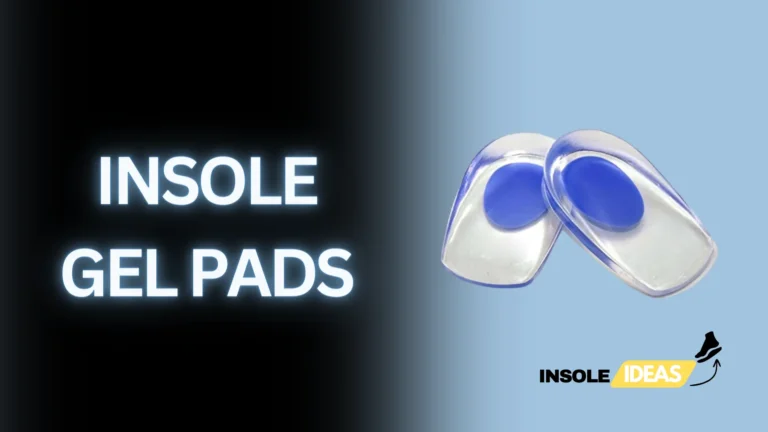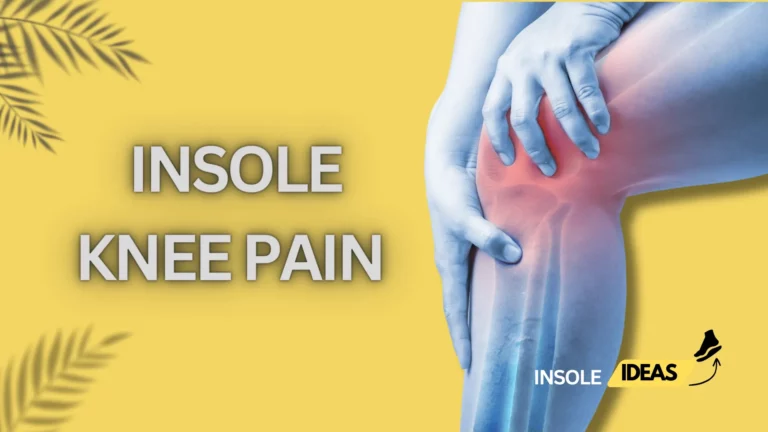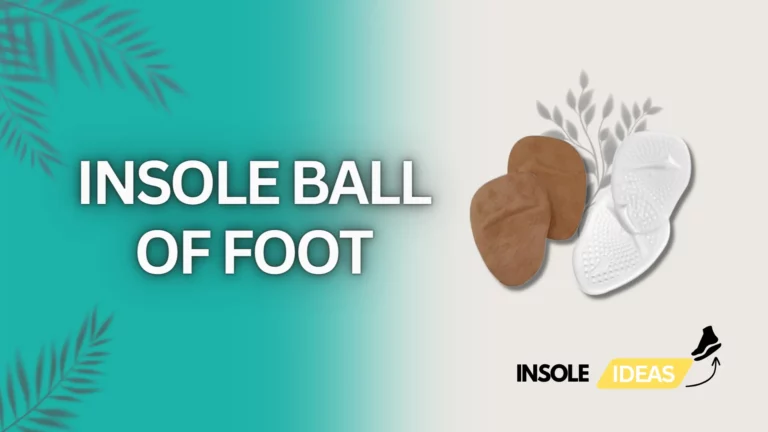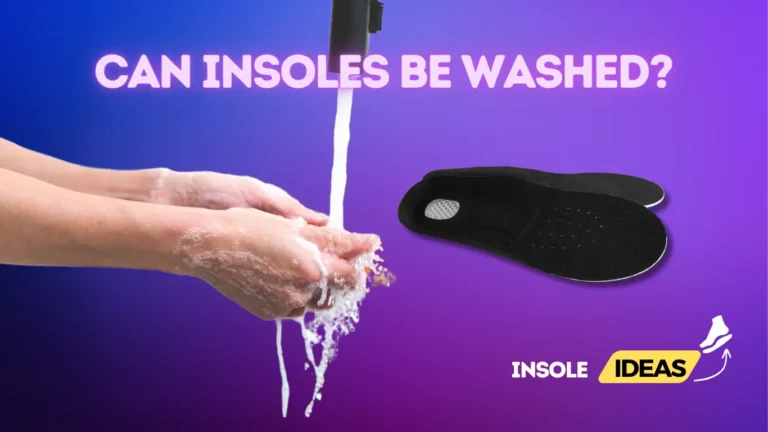Jordan 1: A Comprehensive Guide
Removing insoles from your Jordan 1 sneakers is a crucial yet often overlooked aspect of footwear maintenance. The insole plays a significant role in providing comfort and support to your feet. Understanding the importance of insole removal allows you to customize your footwear experience, catering to your unique preferences and needs.
Brief overview of the importance of removing insoles
Insoles are designed to offer cushioning and arch support, but not everyone’s feet are the same. Some individuals may find the default insoles uncomfortable or insufficient for their specific requirements. By removing the insoles, you gain the flexibility to choose custom or specialized alternatives, enhancing your overall comfort and preventing discomfort or pain during prolonged wear.
The significance of proper techniques for Jordan 1 insoles
While the desire for personalized comfort is paramount, it’s equally crucial to employ the right techniques when removing Jordan 1 insoles. Improper methods can lead to damage, affecting the overall performance and aesthetics of your prized sneakers. This section will delve into the specifics of why and how to remove insoles with care, ensuring a seamless process without compromising the integrity of your Jordan 1s.
Understanding the Insole Structure
Before diving into the removal process, it’s essential to comprehend the intricacies of Jordan 1 insoles. These components contribute to the overall feel and fit of the shoe, and understanding their structure provides valuable insights for effective removal.
Explaining the anatomy of Jordan 1 insoles
Jordan 1 insoles typically consist of multiple layers, including a cushioned top layer, midsole, and sometimes additional support elements. This section will break down each layer’s purpose, helping you grasp the design nuances and make informed decisions when removing or replacing insoles.
Materials used in the construction of insoles
The choice of materials significantly influences the comfort and durability of insoles. Whether its memory foam, gel inserts, or specialized fabrics, each material serves a distinct purpose. Understanding the materials used in Jordan 1 insoles empowers you to select replacement insoles that align with your comfort and performance expectations.
Why Remove Insoles from Jordan 1
Removing insoles from your Jordan 1 sneakers offers various benefits that go beyond just personal comfort. Understanding why this practice is valuable can help you make informed decisions about your footwear.
A. Benefits of removing insoles for comfort
The primary advantage of removing insoles lies in the customization of comfort. Default insoles may not cater to everyone’s unique foot shape or preferences. By removing them, you can replace them with specialized insoles tailored to your needs, providing better arch support, cushioning, and an overall enhanced fit. This not only prevents discomfort but can also alleviate foot pain associated with prolonged wear.
Enhancing shoe lifespan and performance
Insoles play a crucial role in absorbing shock and impact during walking or running. Over time, these insoles can wear down, affecting the overall performance of your Jordan 1s. By regularly removing and replacing insoles, you extend the lifespan of your shoes. This practice ensures that the supportive features of the footwear remain intact, maintaining optimal performance and preventing potential discomfort caused by worn-out insoles.
Tools and Materials Required
To execute a seamless insole removal process, having the right tools and materials at your disposal is essential. This section provides a comprehensive list to guide you through the process.
List of essential tools
1. Flathead Screwdriver: Ideal for gently prying the insole from the shoe without causing damage.
2. Needle-Nose Pliers: Useful for reaching into tight spaces and carefully pulling out stubborn insoles.
3. Shoe Tree: Maintains the shoe’s shape during insole removal, preventing deformation.
4. Soft Brush or Cloth: Helps in cleaning the insoles and shoe interior post-removal.
5. Adhesive Remover (Optional): For tackling any leftover adhesive after insole removal.
Recommended materials for a smooth process
1. Replacement Insoles: Choose insoles tailored to your comfort and support needs.
2. Talcum Powder or Anti-Odor Insole Inserts: Keeps the interior fresh and prevents unpleasant odors.
3. Cleaning Solution: Mild soap or a specialized shoe cleaner for cleaning the removed insoles.
4. Storage Container: Keep removed insoles in a clean and dry place for future use. 5. Lint-Free Cloth: Wipe down the shoe interior and insoles for a thorough cleaning.
Preparing the Workspace
Creating a suitable workspace is essential for a successful insole removal process. This section guides you on how to set up your environment for the task at hand.
Creating a clean and organized environment
Begin by selecting a well-lit and spacious area to work in. To arrange the tools and removed insoles, place a fresh cloth or towel down. Clear the workspace of any loose objects or trash to avoid interfering with the procedure. Having a clutter-free environment ensures a smooth and focused insole removal experience.
Necessary precautions to avoid damage
Before starting the insole removal process, take precautions to avoid damaging your Jordan 1s. Use a shoe tree to maintain the shoe’s shape, preventing unnecessary strain on the upper. Be gentle when using tools, avoiding excessive force that could lead to scuffs or tears. Additionally, if your shoes have delicate materials, consider using masking tape to protect them from accidental scratches or marks during the process. Taking these precautions ensures that the insole removal process enhances your shoes without compromising their aesthetics.
Identifying Insole Attachment Methods
Understanding the various attachment methods used in Jordan 1 insoles is crucial before attempting removal. Each shoe model may employ different mechanisms, and recognizing these methods is the first step towards a successful insole removal process.
Different attachment mechanisms used in Jordan 1
Jordan 1s often utilize adhesive, stitching, or a combination of both to secure the insoles. Some models may have removable insoles held in place by a sock liner, while others might employ a glued-down insole directly attached to the midsole. This section will delve into the common attachment methods, providing insights into what you might encounter during the removal process.
How to recognize the specific attachment in your shoes
Examining your Jordan 1s closely will help you identify the specific attachment method used for the insoles. Look for visible stitching along the edges, adhesive lines, or any indications of a separate sock liner. Additionally, checking the manufacturer’s information or consulting online resources can offer insights into the attachment methods commonly employed in specific Jordan 1 models. Recognizing the specific attachment method ensures that you approach the insole removal with the appropriate techniques, preventing unnecessary damage to your shoes.
Step-by-Step Guide for Insole Removal
Executing a step-by-step insole removal process is essential for a smooth and damage-free experience. This section provides detailed guidance on the necessary considerations and techniques.
Pre-removal considerations
Before diving into the insole removal process, consider factors such as the age of your shoes, the materials used, and the attachment method. Older shoes may have more stubborn adhesives, requiring additional care during removal. If your shoes have delicate materials, take extra precautions to avoid damage. Additionally, having a clear understanding of the insole attachment method, as discussed in the previous section, will inform your approach during the removal process.
Gentle techniques to avoid damage
Employing gentle techniques is paramount to avoid damaging your Jordan 1s during insole removal. To prevent ripping, gently raise the insole’s edges with a flathead screwdriver or needle-nose pliers while maintaining uniform pressure. Slow and controlled movements help loosen the adhesive without compromising the shoe’s structure. If the insoles are stubborn, consider using a hairdryer to soften the adhesive before attempting removal. The secret to successfully removing the insole from your beloved shoes without damaging them is to be precise and patient.
Dealing with Stubborn Insoles
Encountering stubborn insoles is not uncommon, and knowing how to tackle challenging removal scenarios is crucial. This section provides tips to overcome resistance and common mistakes to avoid during the process.
Tips for challenging removal scenarios
For insoles that seem reluctant to budge, patience and persistence are your allies. Applying heat with a hairdryer can make the adhesive more pliable, facilitating easier removal. Alternatively, inserting a thin, flat tool, such as a spatula or credit card, between the insole and midsole can help break the bond without causing damage. If the insoles are stitched, carefully cut the stitching using a precision knife, ensuring minimal impact on the shoe’s interior.
Common mistakes to avoid
Avoiding common mistakes is crucial to prevent unintended damage during insole removal. Rushing the process or using excessive force can lead to tearing or stretching of the insole, affecting its functionality. Additionally, using sharp tools without precision increases the risk of scuffing or cutting the shoe’s interior. Always be mindful of the shoe’s construction and take the time to assess the insole attachment method before starting the removal process.
Cleaning and Maintaining Insoles
Properly cleaning and maintaining removed insoles is essential not only for hygiene but also for ensuring their longevity and performance. This section covers best practices for maintaining the hygiene and quality of your insoles.
Best practices for cleaning removed insoles
Cleaning removed insoles requires a delicate approach to preserve their integrity. Start by carefully sweeping away any loose debris or dirt. Use a gentle brush or cloth to scrape the insoles and a light soap and water solution for a more thorough cleaning. Ensure thorough drying before reinserting them to prevent unpleasant odors. Optionally, consider using specialized insole cleaners or antibacterial sprays for added freshness. Following these practices ensures that your insoles remain comfortable and free from any buildup that could affect their performance.
Storage recommendations for future use
Properly storing removed insoles is crucial for maintaining their shape and effectiveness for future use. Place them in a clean and dry environment, away from direct sunlight or heat. Consider using a designated insole storage container to protect them from dust and potential damage. If storing for an extended period, inserting moisture-absorbing packets can prevent mold or mildew. Following these storage recommendations ensures that your insoles are ready for reuse whenever needed, contributing to a prolonged lifespan.
Troubleshooting Guide
Encountering challenges during insole removal is not uncommon, but with the right troubleshooting approach, you can overcome issues and ensure a successful process. This troubleshooting guide addresses common problems and provides effective solutions.
Addressing issues encountered during insole removal
In some instances, insole removal may present challenges that require specific attention. Issues such as stubborn adhesives, resistance from stitched insoles, or difficulty in reaching certain areas can arise. This section addresses these problems individually, offering targeted solutions to help you navigate through potential hurdles.
Solutions for common problems
1. Stubborn Adhesives: If the adhesive proves difficult to loosen, applying heat using a hairdryer can soften it, making the insole more pliable for removal.
2. Stitched Insoles: For insoles stitched into place, carefully cut the stitching using a precision knife or scissors, ensuring minimal impact on the shoe’s interior.
3. Hard-to-Reach Areas: Use thin, flat tools like a spatula or credit card to reach tight spaces, gradually working the insole away from the shoe’s interior.
Expert Tips and Insights
Gaining insights from footwear experts can significantly enhance your insole removal experience. This section presents advice from industry professionals and additional insights to facilitate a seamless process.
Advice from footwear experts
Footwear experts emphasize the importance of understanding the specific attachment methods used in your shoes. This knowledge informs your approach during insole removal, preventing unnecessary damage. Experts also recommend choosing replacement insoles based on your foot structure and needs, ensuring optimal comfort and support.
Additional insights for a seamless process
Beyond expert advice, additional insights contribute to a smoother insole removal process. Before starting, assess the age and materials of your shoes, tailoring your approach accordingly. Applying a small amount of talcum powder inside your shoes before reinserting the insoles can prevent moisture buildup and enhance overall freshness. Keeping spare insoles for rotation prolongs their lifespan and maintains consistent foot support.
Assessing Insole Condition
Regularly assessing the condition of your insoles is vital for ensuring optimal foot support and comfort. This section provides guidance on checking for wear and tear and determining when it’s time to replace your insoles.
Checking for wear and tear
Inspect your insoles for visible signs of wear, including thinning, creasing, or flattening. Pay attention to areas of high pressure, such as the heel and ball of the foot, as these may wear out faster. If you notice uneven patterns of wear, it could indicate imbalances in your gait or foot structure. Regularly checking for these signs allows you to address issues promptly and prevent discomfort or potential foot problems.
Knowing when to replace insoles
Understanding when to replace insoles is crucial for maintaining foot health and overall comfort. If your insoles show significant wear, have lost their original shape, or no longer provide the necessary support, it’s time for replacement. Furthermore, soreness or discomfort while wearing shoes with insoles may indicate that the insoles are no longer functional. Replacing insoles at the right time ensures continued foot support, preventing issues such as arch pain, shin splints, or joint discomfort.
Insoles and Foot Health
The impact of insoles on foot comfort goes beyond just providing cushioning. This section explores how insoles influence foot health and addresses common foot issues through proper insole care.
Impact of insoles on foot comfort
Insoles play a significant role in distributing pressure, absorbing shock, and providing arch support. The right insoles contribute to a comfortable walking or running experience by reducing fatigue and preventing discomfort. This section discusses how properly chosen and well-maintained insoles positively impact overall foot comfort, allowing you to enjoy extended periods of wear without strain.
Addressing common foot issues through proper insole care
Proper care and attention to your insoles can address and prevent common foot issues. If you suffer from conditions like plantar fasciitis, over pronation, or flat feet, selecting insoles designed to address these concerns can provide relief. Regularly cleaning and assessing the condition of your insoles, as discussed in the previous sections, contributes to foot health by ensuring that your insoles continue to offer the necessary support and alignment. By incorporating these practices into your footwear routine, you can proactively address common foot issues and promote overall foot health.
Alternatives to Insole Removal
While insole removal provides customization, there are alternative approaches to enhance comfort and address specific needs. This section explores the advantages of custom insoles and offers temporary solutions for those seeking alternatives.
Custom insoles and their benefits
Custom insoles are tailor-made to fit the unique contours of your feet, offering unparalleled comfort and support. Unlike generic insoles, custom ones are crafted based on foot impressions, addressing specific issues such as arch support, pronation, or plantar fasciitis. Investing in custom insoles can elevate your footwear experience, providing a personalized solution for long-lasting comfort and foot health.
Temporary solutions for specific needs
For those seeking quick fixes or specific adjustments, temporary insole solutions offer versatility. Gel inserts, arch support pads, or heel cushions can be inserted into your shoes to address immediate discomfort or provide extra support. While these solutions may not offer the same level of customization as custom insoles, they serve as convenient alternatives for addressing specific issues on a temporary basis.
Reinserting Insoles Correctly
Properly reinserting insoles after removal is crucial to maintain the shoe’s structure and ensure continued comfort. This section provides guidance on achieving proper alignment and avoiding common mistakes during the reinsertion process.
Ensuring proper alignment
When reinserting insoles, pay attention to proper alignment to maintain the intended support and comfort. Align the heel and arch of the insole with the corresponding areas inside the shoe. Ensure that the insole sits flat and snug against the shoe’s interior without any wrinkles or folds. Proper alignment not only enhances comfort but also prevents uneven wear and potential foot issues associated with misaligned insoles.
Avoiding common mistakes during reinsertion
Common mistakes during reinsertion can compromise the effectiveness of the insoles and impact your overall comfort. Avoid forcing insoles into place, as this can lead to distortion or damage. Take the time to position them correctly, making sure they sit flush against the shoe’s interior. Additionally, be cautious of any adhesive remnants from the previous insoles, ensuring they do not interfere with the placement of the new ones. You may securely re-insert your insoles, preserving their functioning and enhancing a comfortable wearing experience, by avoiding these typical errors.
Maintaining Shoe Aesthetics
Insole removal and replacement can impact the aesthetic appeal of your shoes. This section offers tips for preserving the original look of your shoes and addresses potential issues such as discoloration or damage during the process.
Tips for keeping the shoe’s original look intact
Preserving the original look of your shoes involves taking precautions during the insole removal and replacement process. Use tools with care to avoid scuffs or scratches on the shoe’s interior. If your shoes have delicate materials, consider using protective measures such as masking tape to prevent damage. Additionally, clean the shoe’s interior after insole removal to remove any adhesive residue or dirt that could affect the overall appearance.
Addressing discoloration or damage during the process
In some cases, insole removal may result in discoloration or damage to the shoe’s interior. To address discoloration, use a mild cleaning solution or specialized shoe cleaner to restore the original color. For minor damage, consider using a leather conditioner or fabric glue, depending on the shoe’s material. Taking proactive steps to address aesthetic concerns ensures that your shoes maintain their visual appeal even after insole removal, allowing you to enjoy both comfort and style.




